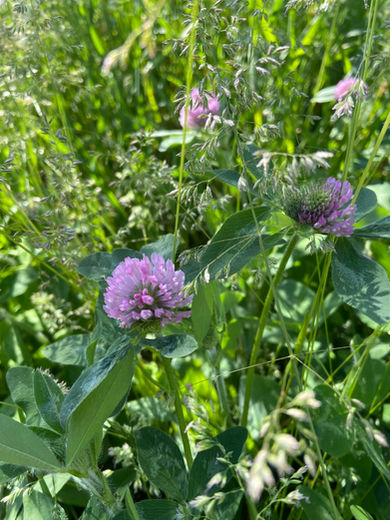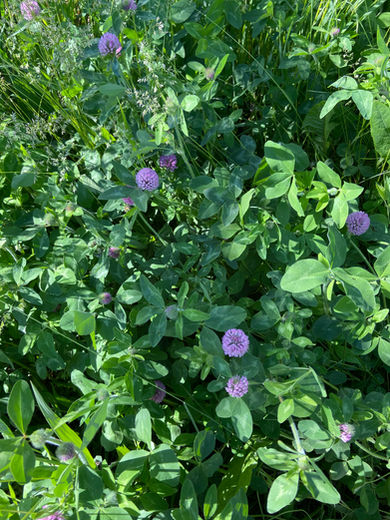Red Clover
Common Name: Red Clover.
Scientific Name: Trifolium Pratense.
What to look for? Not red - Red Clover is almost never red! Rather look for beautiful purple, spherical flowers that sit atop a single tall green stem! Look closely and see that Red Clover is a dense, dome-shaped cluster of flowers. This cluster is comprised of numerous, long, symmetrical, tube-like flowers. The leaflets are small, deep green, and textured. The fruit is a legume with 1 to 2 kidney-shaped seeds.
Where can they be found at Carillon Stonegate Pond? From late spring and through summer, you can find the Red Clover around the walking paths, and the fields adjacent to the woodlands. There are Red Clover near the pond near the police department headquarters.
How big are they? Red Clover may grow up to two feet tall. The elliptical leaves are approximately 1 ½ inches long and ½ inch across. Each spherical flower head is about 1 ¼ inch in diameter.
Where do they grow and thrive? Red Clover is not native to the U.S. and is believed to have been introduced from Europe. It is, however, found in much of the U.S. and southern Canada. Red Clover is a common plant that occurs in every county of Illinois. The Red Clover thrives in a variety of habitats including wet to dry meadows, open forests, and on the margins of forests.
When do they bloom? The blooming period of the Red Clover usually occurs from May through September.
Do birds, insects or other wildlife associate with this plant? The nectar and pollen of the flowers of the Red Clover attract many kinds of long-tongued bees, including bumblebees. Butterflies and skippers also visit the flowers for nectar. Among the butterfly visitors are Swallowtails, Monarchs, and Painted Ladies.
Interesting Facts About Red Clover:
-
The genus, Trifolium, means three leaves and refers to the 3-parted leaf. The species, Pratense, means 'of the meadows' - the plants typical habitat.
-
Red Clover was introduced from Europe as a hay and pasture crop for food for livestock.
-
In crowded grassy areas, Red Clover will grow upright; while, in open areas, Red Clover does what it likes best: rest itself sprawling along the ground.
-
Like all members of the Pea family, red clover has nitrogen-producing root nodules, so is extremely useful for crop rotation.
For more information on the Red Clover and sources of information used in this blog (these are several of the sources that I am using to learn as I blog), please visit Illinois Wildflowers, Friends of the Wildflower Garden, Minnesota Wildflowers, and U.S. Department of Agriculture.
The Carillon at Stonegate community is very fortunate to have a variety of wetland, forest and prairie environments conducive to a variety of birds and other wildlife, insects and plants. Our community and the Kane County Forest Preserve do an exceptional job in maintaining this natural environment – both for the benefit of the birds and wildlife and for our residents to enjoy.
Take a hike and see what you can find – and identify!


